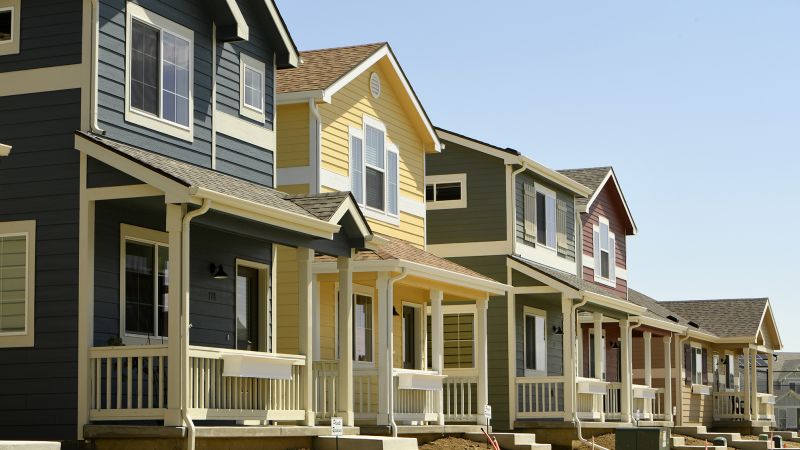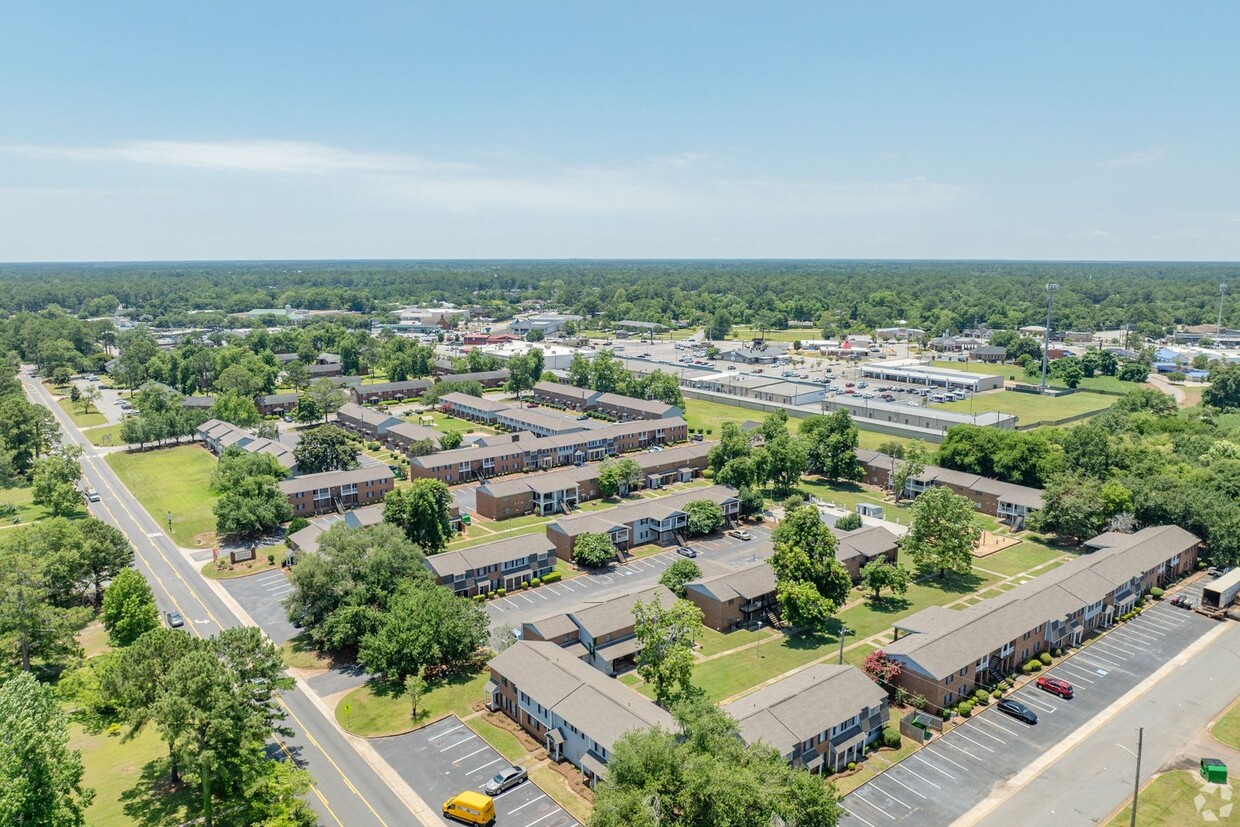Affordable Housing: Investing for Profit
Affordable Housing: Investing for Profit
Successful real estate investors are more than just landlords. They can also be savvy business executives. Property investors operate much like portfolio managers and business managers, focusing on maximizing profits while creating value for clients. Investing in affordable housing is a business and an investment strategy.
What Is Affordable Housing?
The U.S. Department of Housing and Urban Development (HUD) defines affordable housing as homes where “the occupant is paying no more than 30% of gross income for housing costs, including utilities.” As a measure of gross income, this definition is meant to measure affordability for those at the median household income or below, though these figures can change drastically across and within different geographic areas of the U.S.
Here are other key aspects of affordable housing:
- Diverse forms: Affordable housing is a broad umbrella term that covers different ways people access financially reachable places to live, including public housing, subsidized housing, rent-controlled apartments, low-income housing tax credit properties, housing provided through nonprofit organizations, or community-based initiatives to maintain and create further housing units affordable to people with lower and middle incomes who live there.
- Economic benefits for communities: Affordable housing can play an essential role in maintaining communities over time and have significant economic benefits. These can include construction jobs needed to build affordable homes, enabling residents to live closer to where they work, and keeping housing costs down so that money can go elsewhere in the community, whether to pay for necessities like food or local goods and services.
- Government assistance for some types: Many affordable housing programs are supported by government initiatives, which could include subsidies, tax incentives, or zoning laws that encourage the development of affordable units.
- Incentives for investors: Property owners may receive tax credits if they use a percentage of their property as affordable housing, for example, by setting aside a given number of rental units in a building. The provision of affordable housing also plays a role when municipalities review bids for selling properties or reviewing zoning permits for building construction.
- Public-private initiatives: Affordable housing projects frequently involve collaboration between public and private entities to address the housing needs of different communities.
- Quality of life: When discussing affordable housing, stakeholders also focus on the quality of life residents would have, including proximity to public transportation, jobs, schools, and healthcare.
Here are some of the demographic groups of people frequently highlighted in discussions of affordable housing:
Adults Age 65 or More
Older adults, those aged 65 or more, represent a significant and growing segment of the U.S. population. A 2023 study by Harvard University’s Joint Center for Housing Studies reports that since 2012, the population of those 65 and over grew 34%, from 43 to 58 million. Meanwhile, 27% of all U.S. households are headed by adults in this age group. This demographic shift underscores the increasing demand for housing tailored to the needs of different subsets of this age group.3
Harvard University Joint Center for Housing Studies. “jchs.harvard.edu.”
People Experiencing Homelessness
People experiencing homelessness are often a focus in discussions of affordable housing, given that affordability is a key issue for those who are unhoused. HUD reports that, as of 2022, just under 600,000 people were unhoused, with about 28% of those experiencing homelessness being of a family with children.2 This was a slight increase over recent years, though the numbers for specific groups were higher, including those with disabilities who have experienced long-term homelessness, which grew 16% since 2020, and people in unsheltered settings.
Single people not part of family households make up the majority of the population experiencing homelessness, with about 40% of those experiencing homelessness outside urban areas.2 Demographic disparities remain pronounced among those who experience homelessness, with those who identify as Black, African American, African, Native American, and Pacific Islander disproportionately represented.
People With Disabilities
People with disabilities constitute another important group in the U.S. that often needs specialized housing considerations. Housing for individuals with disabilities usually prioritizes ease of access and mobility. This includes incorporating features such as wheelchair-accessible bathrooms, ramps as alternatives to stairs, and other modifications that facilitate independence and daily living. Ensuring these accommodations are close to public facilities and support services can also enhance quality of life.
Students
The growing numbers of adult and nontraditional college and university students have increased the need for off-campus housing. Adult students with families need private housing close to campus. International students need housing that is available year-round because it is less expensive and more convenient than frequent international travel on holiday and summer breaks
Veterans and Military Service Members
Military service members have housing options on and off their bases. On-base housing requires construction, property management, and grounds maintenance, while off-base housing requires additional location assistance, custom construction, and purchase financing. Off-base housing must be close to the base and easy to move into and out of. Military housing investors should be familiar with federal contracting and the specific guidelines for each branch of service.
Once out of the service, those who have served in the military, especially those with disabilities, mental health issues, or financial instability, report having greater problems accessing affordable housing. The problem remains, though the number of veterans experiencing homelessness has declined in recent years, with 40,238 fewer veterans experiencing homelessness in 2022 than in 2009, a drop of almost 55%, HUD reports.2 The U.S. Department of Housing and Urban Development. “2022 AHAR: Part 1 – PIT Estimates of Homelessness in the US.”
Working Poor
This is the terminology used for individuals who have jobs but do not earn enough to afford market-rate housing in their area. For official purposes in the U.S., the “working poor” are those who have spent at least the last 27 weeks in the labor force but whose incomes still fall below the official poverty level (in 2023, $14,580 for an individual and $24,860 for a family of three).4 The Bureau of Labor Statistics, using U.S. census data, reports that in 2020, the last for which data was available, 6.3 million people were among the “working poor,” about 4.1% of those in the labor force.5
Young Professionals
In many areas, young professionals starting their careers may find themselves priced out of the housing market, especially in major metropolitan areas, where market-rate housing is out of reach for those with entry-level salaries—and frequently for those making quite a bit more. Many young professionals are faced with paying down student loan debt, which can determine their ability to save for a down payment on a home or afford higher rents. Besides affordability, safety, proximity to public transportation, and community resources are important for young professionals when choosing where to live.
Rehabilitation and Re-Entry Programs
People and families experiencing homelessness, people with addictions, those in recovery, and those newly released from correctional facilities require forms of transitional housing. Some adults and children in state protective services and mental health programs require group homes and neighborhood-based housing.
Apartments and boardinghouses should be large enough to provide adequate facilities and privacy for residents, but they must also yield the security and accessibility levels appropriate for each group.
Requirements for Affordable Housing Investment
Affordability is important to investors, among other reasons, since it helps determine three crucial details: profitability, marketability, and financing. Subsidized housing programs, such as Section 8, help lower-income families afford rent by paying a part of the market price for rental units. Investors in affordable housing should know the median income for their area to determine what type of return they might get when buying property and using it for affordable housing.
Several sources can be used to determine the median income. The U.S. Census Bureau compiles average incomes for states, counties, and cities. Real estate websites have this information for people interested in buying homes in particular regions.
Lastly, information is also available through state and local governments, economic development agencies, and housing authorities:
- For affordable rent, calculate 30% of the median income in your area. This is the upper limit of the expected gross income per affordable rental unit.
- For affordable homeownership, calculate 35% of median income for principal, interest, property tax, homeowner insurance, and association fees. Then, calculate your expected sale price by deducting the amount for tax, insurance, and fees based on going rates for the area. Use the difference, principle, and interest to determine the purchase price based on the going interest rates for your area. A banking or mortgage professional can help you quickly determine these amounts.
Profitability
To determine the prospective profitability of an investment, estimate your operating expenses. For rental units, start with the taxes and insurance you pay as the owner. Include any utilities, building, grounds maintenance costs, and transfer costs such as inspection, occupancy certification, registration, and other fees required by your county or municipality.
For units to sell, determine your financing costs, closing costs at acquisition and at the time of sale, material and labor costs for construction or rehabilitation, and transfer costs.
For both rental and sale units, determine your marketing and advertising costs. The best projects will flop if you cannot attract renters or buyers. Even simple advertising strategies cost money and time. Consider the costs of doing business that affect your bottom line.
Next, determine your income. For rental units, use the amount of expected gross income per affordable unit. For sale units, use the purchase price determined above. Use this standard formula: Income — Expenses = Gross Profit
Consider your cash flow. If you pay utilities, some programs allow additional amounts to be paid by the subsidizing authority to cover a part of tenant utilities.
Finally, look at your income tax situation. Depreciation will affect your tax liability and the actual cash flow or net profit.
Marketability
The affordable housing investor must locate and modify units that meet guidelines for rental subsidies from local housing authorities if this assistance is part of your strategy for meeting your costs. For sellers, focus on minimizing construction and rehabilitation costs for units to be sold on the market.
- Start with simple logic. If it is not profitable, it is not marketable. The reverse is also true.
- Take advantage of foreclosed homes. Many single and two- to four-family homes are available after foreclosures.
- Contact local economic development agencies who acquire these units below market cost and sell to or contract with local developers to rehabilitate and resell. Also, learn the ins and outs of sheriff sales in your area. Check the guidelines for each county you will target, as guidelines may differ among counties in the same region or state. These units are often purchased sight unseen and may represent significant rehabilitation costs and turnaround time to resell.
- Work with a realtor and learn about the local for sale by owner market. You may find opportunities for short sales where the seller or selling agent has made arrangements for a reduced mortgage payoff to aid a quick sale. These units may be the least expensive to fix up and resell.
Successful investors know when and how to move in the market. Don’t forget to perform ongoing buy-sell-hold analysis on rental units. If labor, material, and financing costs are high, now may not be the time to buy more properties. If more renters are in your market, now may not be a profitable time to sell units, even if interest rates are low. If market rent and median income in your area are high, now may be the most profitable time to retain property for the monthly rental income it can generate.
Financing
Research financing alternatives available to investors in affordable housing. Read up on Fannie Mae, Freddie Mac, and HUD Multifamily Financing. Work with a local banker and a commercial mortgage broker or consultant to identify lender programs and find private investors. Join local homebuilder, remodeling, and real estate investor associations. Become a member of the chamber of commerce and affiliate with economic development agencies. Use these relationships to identify public and private financing and operating partnerships.
Action Plan
- Be informed. Learn about affordable housing across the country and in your area.
- Be involved. Make a market for affordable housing. Identify a niche in your area and fill it. Forge partnerships with like-minded investors and financing sources.
- Be a profitable investor. Function as a business manager. Apply conventional investment wisdom and business strategy advice.
The Bottom Line
An affordable housing investor must be a landlord, an investor, and a business executive. As a landlord, incorporate the human element. Remember that you can create a market by helping families and your community. As an investor, create a blue-chip real estate portfolio. Have the best properties in the most desired areas at the best prices that turn the most profit. As a business executive, create a brand, generate goodwill, and maximize the market value of your brand, not just on individual units. Remember that your activities also create job options for construction workers and real estate sales agents. Your marketing and property managing activities help attract workers to the labor force in your units’ areas. Not only can you create personal profits, but you can also create economic opportunities for people and communities through affordable housing investment.
Invest In Real Estate. Do You Need Real Estate Asset Management or Property Management ?
Rely on those that know the business, We live it and breath it – at SIMM Capital our investment strategy is to seek the best assets that hold the largest opportunities to improve on management and value, delivering in rent growth year over year that will result in cash out refinance events and high quality returns. We know the business. To see how we can help you click the link – www.simminc.com





Recent comments